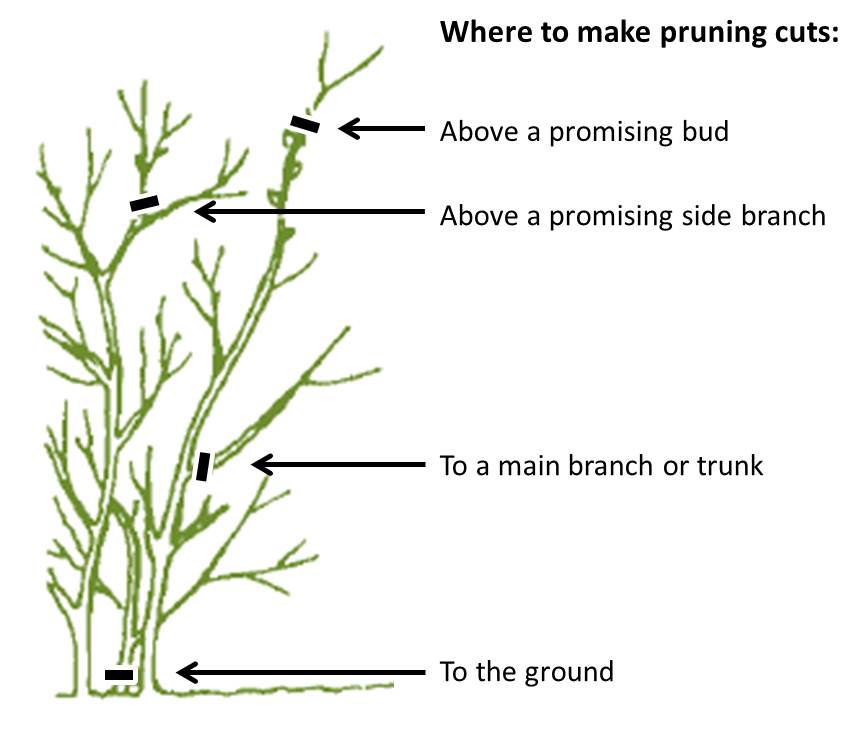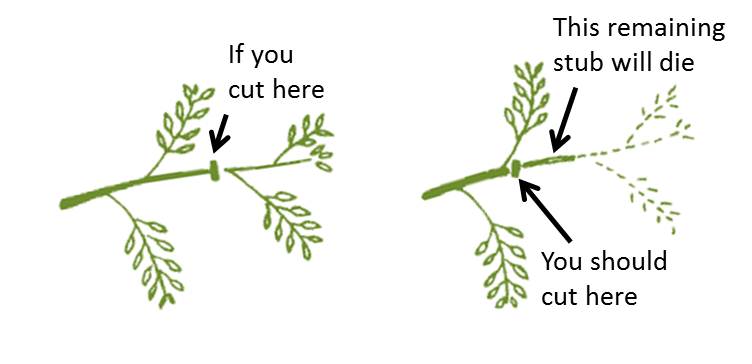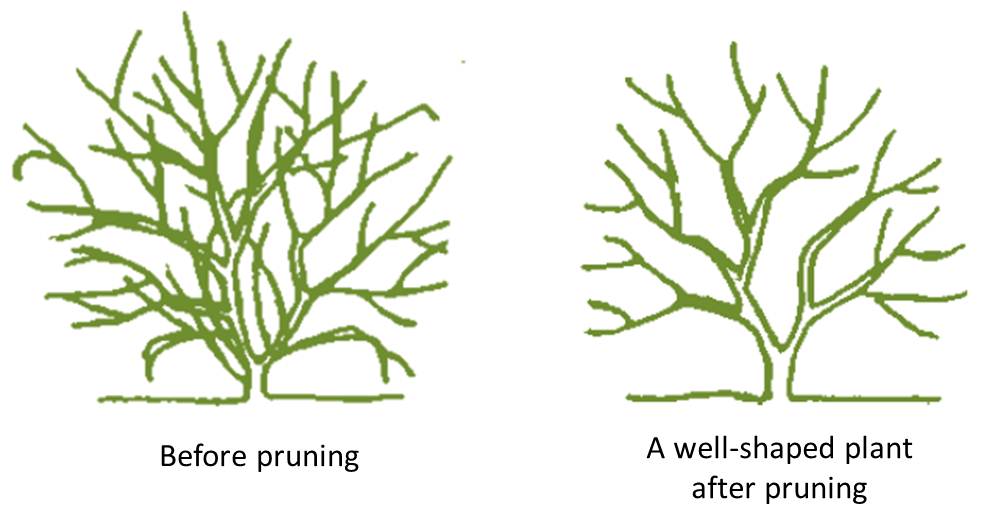
Images and text are adapted from “Pruning Landscape Shrubs” by R.E. McNiel, W.L. Mesner, W.M. Fountain, and W.D. Dunwell, and “Pruning Landscape Trees” by M.L. Witt, R.E. McNiel, and W.M. Fountain.
Do not prune in late summer or fall. This promotes tender new growth that cannot survive the winter.
A general rule: If the plant flowers before June 1st, prune it during or shortly after flowering. If it blooms after June 1st prune it in the late winter or early spring before flower buds are visible.
ALWAYS prune back to or just above a growing point (branch or bud) or to the soil line. NEVER leave a stem or branch stub.
NEVER top a tree to “rejuvenate” growth. This ruins the plant’s natural shape and greatly increases its susceptibility to diseases, insect pests, and storm damage.


Completely remove the following:
Dead branches: Live and dead branches can be differentiated even during dormancy. Live branches tend to be more flexible, have a green layer just below the bark, and their buds are green inside. Dead branches are brittle with withered brown buds and no green layer.
Branches that will girdle other branches
For trees (and possibly some shrubs), also remove the following:
Branches that are growing toward the center of the plant
Suckers: These unwanted shoots grow directly from the roots and appear near the base of the tree.
Water sprouts: These shoots grow straight upward, almost perpendicularly, from dominant branches.
Branches that have very narrow angles
Ideally, a shrub or tree maintains healthy leaves both interiorly as well as exteriorly. However, overly dense exterior growth prevents light from reaching the interior portion of the plant.
When light is only available on the outer surface of the plant, the plant grows a dense outer “shell” while remaining “dead” interiorly. This is particularly common in shrubs that are continually sheared.
This “shell” will sometimes prevent adequate moisture from reaching roots directly below the plant. Furthermore, moisture that accumulates on the outer foliage may persist due to reduced air movement within dense foliage. This can lead to foliar diseases that thrive in moist conditions.
By thinning out dense growth, you can improve light, rain, and air penetration to improve your plant’s overall health.

Prune trees and shrubs annually to maintain a well-shaped plant and avoid temptations to over-prune a neglected plant. Remove no more than 30% of the plant during pruning.
Over-pruning can cause permanent damage by removing significant portions of plant carbon and nutrient reserves. Extend major pruning projects over the course of a few years if necessary.